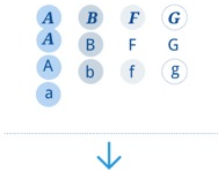1.
LISE – Legal Language Interoperability Services ^
The LISE project (http://ztwweb.trans.univie.ac.at/lise/) aims to facilitate the consolidation of administrative nomenclatures and legal terminologies. It develops tools and best practices to enhance interoperability and cross border collaboration.
1.1.
The Value of LISE ^
1.2.
Concrete Benefits for Data Owners ^
- Efficient spotting of inconsistencies and gaps: LISE allows the automated identification of doublettes, inconsistent meta data, or similar terminological entries that wait to be unified.
- Collaboration with peers from other institutions: In the LISE Collaboration Portal all stakeholders, from different organisations, can communicate about their terminological resources, inspect the results created by the LISE tools, discuss reviews and drive new activities.
- Benefitting from proven best practices: Users understand at what point in time each specific tool or method might be usefully applied.
1.3.
Collaborative Cleaning of Large Terminological Resources ^
1 – Data Status: Before
Redundant data: We see doublettes (for instance records illustrated by the same A in the graphic)
Inconsistent data: A’s are not together, not all B’s are together etc.
Incomplete data: We see gaps (information for the concepts illustrated by A and B is deeper than for G or F)
2 – Spot the Flaws
LISE Tools automate the spotting of such flaws, namely doublettes, inconsistencies, gaps. Potential mistakes in the large data set are identified and listed.
3 – Review of the Results with Peers
In the LISE Collaboration Portal the identified problems are presented, discussed and decisions are driven. Records belonging together are potentially merged, missing data is added, and inconsistencies are cleared. A joined approval can be reached.
4 – Data Status: After
The resource is now clean, consistent, and enhanced.
2.1.
The Web Service ^
- accessibility to high quality terminology resources in many domains and languages
- dissemination of best practices of how to improve and use one’s own terminology repositories
- handling of the diversity of coding schemes and data organization
- improve cross-lingual and cross-domain interoperability (syntactic, semantic, pragmatic) across existing technical applications
- handling of cultural differences across language communities and domain cultures (administrative and legal language is the best example)
2.2.
LISE Top Level Workflow ^
3.
Web Service Design: The Influence of Modern Social Media Approaches ^
3.1.
«Not so Modern» Approaches versus Google+ et al ^
3.2.
The LISE Collaboration Portal: a Module of the LISE Web Service ^
4.1.
Functionality Outline ^
Home Page:
• Top level, public announcements
• Sign-In fields
• About, Contact, and Register pages
After Having Signed In:
• Fully equipped collaboration and discussion functionality
• «My Stream»: to navigate to individual or group discussions
• «Bookmarks» to re-navigate quickly to very interesting topics
• «Areas» to cluster topics
• Creation of new topics
• Voting on Yes/No-type topics
• Attachments of files to topics
• Replying and commenting via new posts to an existing topic
• Discussion amongst individuals or within groups
4.2.
The Technology behind the Service ^
5.
LISE Project State Spring 2012 and Outlook ^
Senior Product Manager, ESTeam Germany GmbH, Rungestrasse 20, 10179 Berlin, Germany
michael@esteam.se; www.esteam.se











